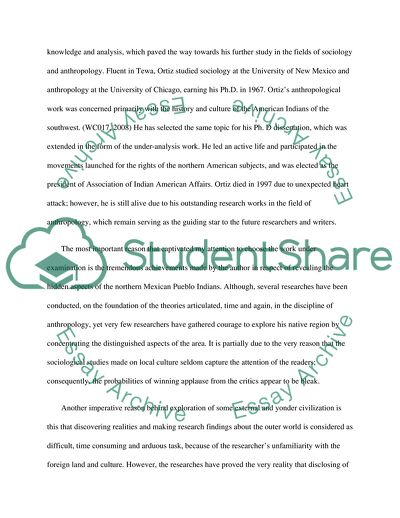Cite this document
(Analysis of The Tewa World Study by Alfonso Ortiz Essay - 1, n.d.)
Analysis of The Tewa World Study by Alfonso Ortiz Essay - 1. https://studentshare.org/anthropology/1749367-anthropology-diagnostic-essay-about-an-ethnographic-text-written-by-an-anthropologist
Analysis of The Tewa World Study by Alfonso Ortiz Essay - 1. https://studentshare.org/anthropology/1749367-anthropology-diagnostic-essay-about-an-ethnographic-text-written-by-an-anthropologist
(Analysis of The Tewa World Study by Alfonso Ortiz Essay - 1)
Analysis of The Tewa World Study by Alfonso Ortiz Essay - 1. https://studentshare.org/anthropology/1749367-anthropology-diagnostic-essay-about-an-ethnographic-text-written-by-an-anthropologist.
Analysis of The Tewa World Study by Alfonso Ortiz Essay - 1. https://studentshare.org/anthropology/1749367-anthropology-diagnostic-essay-about-an-ethnographic-text-written-by-an-anthropologist.
“Analysis of The Tewa World Study by Alfonso Ortiz Essay - 1”. https://studentshare.org/anthropology/1749367-anthropology-diagnostic-essay-about-an-ethnographic-text-written-by-an-anthropologist.


